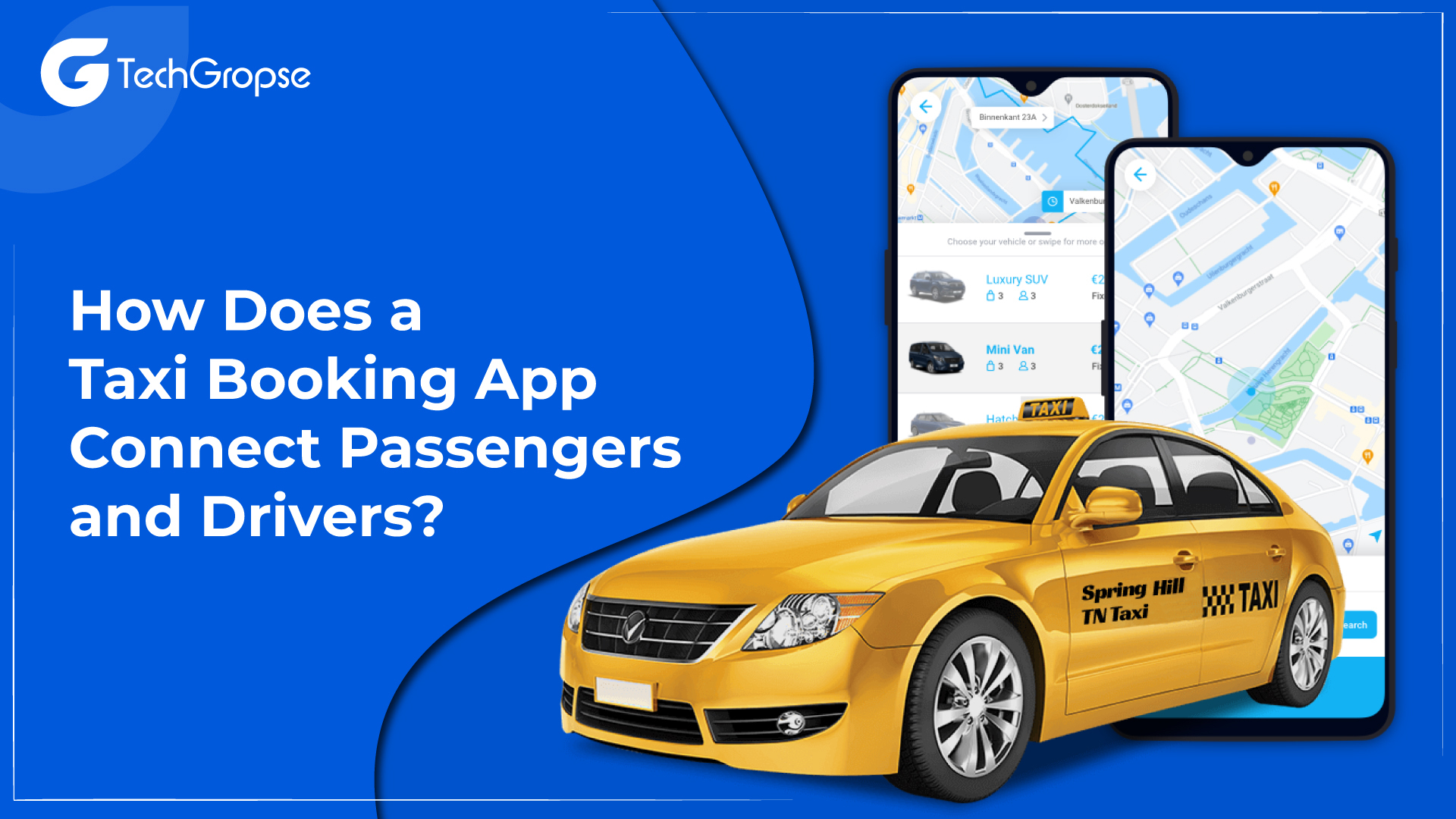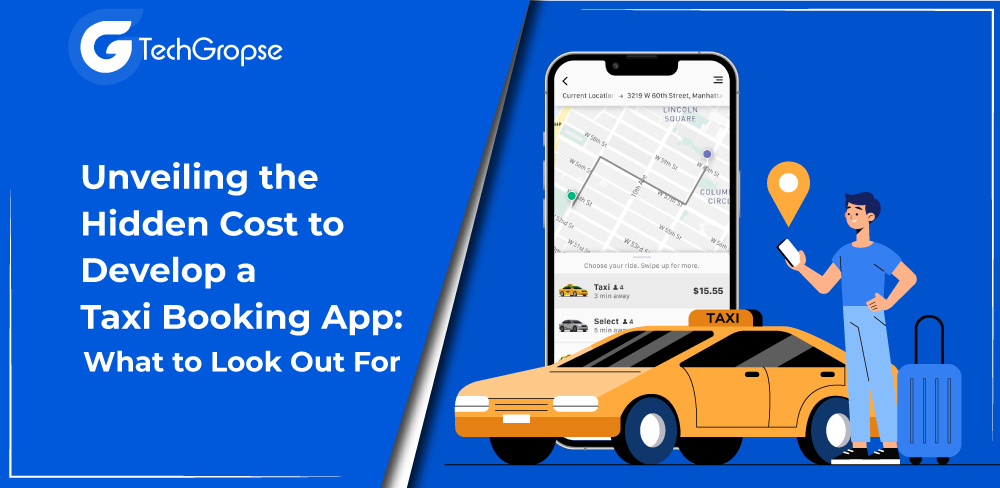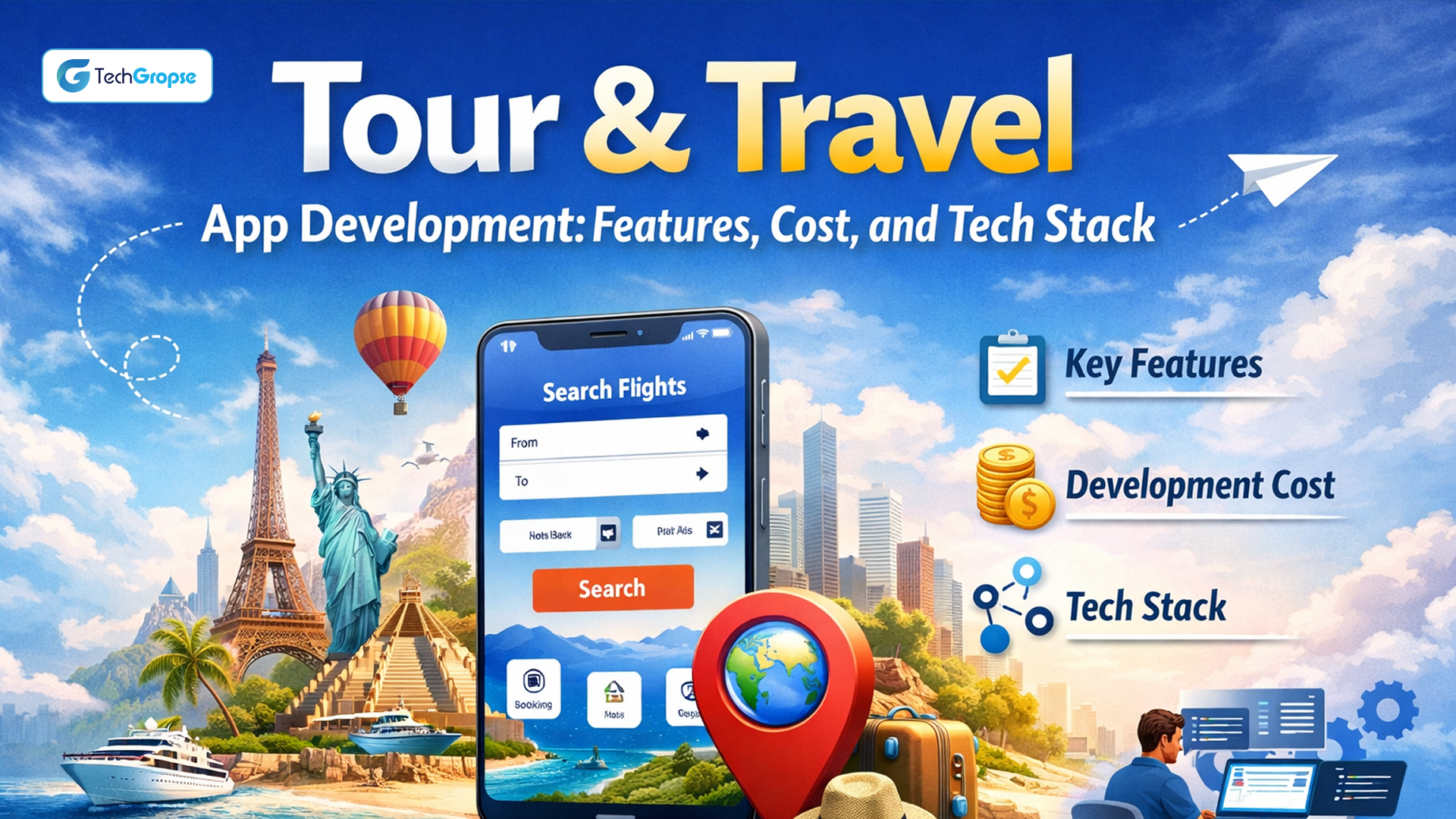Unveiling the Hidden Cost to Develop a Taxi Booking App: What to Look Out ForDid you know that running a successful ridesharing business requires having an app like Uber for booking taxis? You are finding the accurate cost to develop a taxi booking app.
Well, taxi apps have changed the way from old-school rides and are now it must-have for both existing taxi companies and new startups. But only having an app idea is not a guaranteed win.
Once you move into the taxi industry, you may face some challenging tasks and tough competition among top players, especially from top apps like Lyft and Uber.
Did you know that they have millions of active users and have lots of cash? Yes, it is right.
So, if you want the first choice of users, you need to offer something special. That is where having a strong brand and a clear, convincing reason for people to choose your app.
Your taxi service needs to be known and trusted, with something additional that sets it apart from others.
Plus, you have to consult with a trusted tech partner. You want a taxi app development company in Dubai that knows how to build taxi apps like Ola using the latest technology.
You can rely on the right brand, a unique selling point, and a tech team. Your taxi app can make real use in the market and win over users.
Here, you will explore the taxi booking app development costs that can impact your project’s budget.
By uncovering these costs and understanding the important factors affecting cost to develop a taxi booking app, businesses can access app development more effectively.
Overview of the On-Demand Transportation Industry
In a world where instant services are must, the on-demand transportation industry has taken off like hotcakes.
From selecting cabs to booking rides at your fingertips, it’s all about getting from point A to point B with convenience and speed.
Gone are the days of waving frantically for a taxi on a rainy day. Taxi booking apps have become the go-to solution for modern commuters.
With just a few taps on your smartphone, you can book a ride, track your driver in real-time, and pay seamlessly – all while sipping your morning latte.
Why Taxi Booking Apps Taking Over the Transportation Industry
In 2024, the Taxi Market is estimated to be worth around USD 275.94 billion and is projected to reach a whopping USD 423.59 billion by 2029. That is a substantial growth rate of 8.95% during the prediction time from 2024 to 2029.
Similarly, the taxi app market is expected to hit a value of $283 billion by 2028, with a compound annual growth rate (CAGR) of 4.2% from 2023 to 2028.
Breaking Down the Expenses: Cost to Build a Taxi Booking App?
| Complexity Level | Team Size | Cost Range (Approx.) |
| Simple | 2-4 | $10,000 – $30,000 |
| Mid-Level | 5-8 | $30,000 – $70,000 |
| Advanced | 8-12 | $70,000 – $150,000 |
Remember that, these costs to develop a taxi booking app are approximate and can differ depending on various factors. It includes important features, the development platform, the location of the mobile app developers, etc.
Analyzing the Expenses Involved in Creating a Taxi Booking App Worldwide
| Location | Cost Range (Approx.) |
| North America | $50,000 – $200,000 |
| Europe | $40,000 – $180,000 |
| Asia | $30,000 – $150,000 |
| Australia | $50,000 – $200,000 |
| Africa | $20,000 – $100,000 |
| South America | $30,000 – $150,000 |
Top 10 Key Factors Influencing the Cost of Taxi App Development
As we know, choosing the best mobile app development company is like selecting the perfect pair of shoes. Right?
The development platform can impact the overall cost to develop a taxi booking app, so choose carefully to avoid any issues. Already, we discussed that one size does not fit all in the world of taxi booking apps like Uber.
However, customization and integration requirements can add extra cost to develop a taxi booking app.
Whether it is offering features to fulfil user needs or integrating third-party services, you should prepare to invest in making your app stand out in a competitive marketplace.
Several Factors Influence the Cost of Taxi App Development:
- Features and Functionality: The complexity and number of features desired, such as GPS tracking, payment integration, driver-rider communication, and ratings/reviews system, significantly impact development costs.
- Design: A user-friendly and visually appealing interface requires design expertise, which can add to the overall development cost.
- Platform: Developing for multiple platforms (iOS, Android, web) increases costs compared to focusing on a single platform.
- Technology Stack: The selection of tools & frameworks, different programming languages, and third-party APIs affects the development time and cost.
- Geographical Location: App development price differ based on the multiple location of the development team. Generally, rates are higher in various regions with a higher cost of living.
- Integration: Integrating with third-party services such as payment gateways, mapping services, and SMS notification systems can add to development costs.
- Security Requirements: Implementing robust security measures to protect user data and transactions increases development time and cost.
- Regulatory Compliance: Compliance with local regulations, such as data protection laws and licensing requirements, may necessitate additional features or development efforts.
- Testing and QA: Quality assurance processes and rigorous testing are essential for a reliable app, and they contribute to development costs.
- Maintenance and Ongoing Support: After the taxi app launch, ongoing updates, maintenance, and customer support are necessary for its success and add to the overall mobile app development cost.
Read More: Taxi Booking App Development Cost in India
Considering These Factors Helps In Estimating The Budget For Taxi App Development Accurately.
| Development Stage | Estimated Cost Range |
| Conceptualization & Planning | $5,000 – $15,000 |
| UI/UX Design | $10,000 – $30,000 |
| Frontend Development | $15,000 – $40,000 |
| Backend Development | $20,000 – $50,000 |
| Admin Panel Development | $10,000 – $25,000 |
| Driver App Development | $15,000 – $40,000 |
| Passenger App Development | $15,000 – $40,000 |
| Testing & Quality Assurance | $10,000 – $25,000 |
| Deployment & Launch | $5,000 – $15,000 |
| Maintenance & Updates | Ongoing costs, typically 20-30% of initial development cost per year |
Please note that these are approximate cost ranges and can vary depending on various factors such as app complexity, features, development team rates, and location. If you want accurate cost to develop a taxi booking app, you must hire dedicated developers.
Cost Comparison: Custom vs. Ready-Made Solutions for Taxi Booking Apps
Building a taxi booking app is like planting a money tree – it requires upfront investment and ongoing care. Initial development costs may sting.
Remember the hidden factors of ongoing maintenance expenses that keep your app running smoothly for the long haul.
Here’s a comparison between the costs of developing a custom taxi booking app versus using a ready-made solution:
| Aspect | Custom Solution | Ready-Made Solution |
| Initial Cost | Higher upfront cost due to development | Lower front-end cost as it’s pre-built |
| Customization | Highly customizable to fit detailed requirements | Limited customization options |
| Time to Market | Longer development time | Quicker deployment as it’s ready to use |
| Maintenance & Updates | Requires ongoing maintenance & updates | Updates and maintenance are managed by the provider |
| Scalability | Scalability tailored to specific requirements | Generally scalable but limited customization |
| Control | Full control over features and functionalities | Limited control over features and roadmap |
| Integration with existing systems | Can be seamlessly integrated | Integration may require additional or limited effort |
| Total Cost of Ownership (TCO) | Higher TCO due to ongoing maintenance & updates | Lower TCO due to lower upfront cost and reduced maintenance |
Get suggestion with on demand app development company for choosing between a custom solution and a ready-made solution depends on factors such as budget, time constraints, level of customization needed, and long-term business goals.
Key Components and Features of a Taxi Booking App

Key components and features of a taxi booking app typically include:
1. User Interface (UI)
- User-friendly registration and login screens.
- Easy user interface for booking rides, including options for destination, pickup location, and ride preferences.
- Clear display of available drivers, estimated arrival time, and fare estimates.
- Easy-to-navigate screens for managing payment methods, ride history, and settings.
2. Driver Interface
- Registration and verification process for drivers.
- Dashboard for managing ride requests, accepting or rejecting bookings, and navigation assistance.
- GPS navigation and real-time tracking of ride requests and pickup and drop-off locations.
- Earnings and trip history tracking features.
3. Admin Panel
- Centralized dashboard for managing users, drivers, and rides.
- Tools for managing commissions, setting pricing, and making reports.
- Customer support features like messaging and issue resolution tools.
- Analytics and valuable insights for tracking app performance and user behaviour.
4. Booking and Dispatch System
- Automated matching of riders with nearby drivers based on their exact location and availability.
- Accurate calculation algorithms are based on factors like time, distance, and pricing.
- Notification system to update drivers’ and users’ ride status, driver arrival, and payment confirmation.
5. Payment Integration
- Secure payment gateway integration for processing successful transactions.
- Support for various payment techniques like credit/debit cards, mobile wallets, and cash payments.
- In-app wallet feature for storing and managing user credits or promotional balances.
6. Rating and Review System
- Two-way feedback system for riders and drivers to rate each other and provide reviews after completing a ride.
- Helps maintain service quality and accountability and informs future ride selections.
7. Safety and Security Features
- Vehicle and driver and verification processes to ensure rider safety.
- Emergency assistance button for reporting safety purposes or emergencies during a ride.
- Sharing and trip monitoring options for users to share their ride details with trusted contacts.
8. Localization and Internationalization
- Support for multiple languages and currencies to accommodate users from diverse backgrounds.
- Localization of maps, addresses, and other content to give a smooth experience in various areas and regions.
9. Additional Features
- In-app promotions, referral programs, and loyalty rewards to incentivize usage and user retention.
- Integration with external services such as food delivery, parcel delivery, or public transportation for a broader range of offerings.
- User can share their ride experiences on social media platforms.
How Does a Taxi Booking App Connect Passengers and Drivers?

The taxi booking app works on a model that involves several key steps:
1. User Registration
Users download the app from the app shop and create an account via byling necessary info, which includes call, email, and contact range. They can also install diverse price techniques like mobile wallets or credit score/debit playing cards.
2. Booking a Ride
Users open the app and enter their preferred pickup and drop-off places. The app displays available close-by drivers’ expected arrival times and accurate fees. Users choose their favored ride choice and confirm the booking.
3. Matching with Drivers
The app’s set of rules fits the user’s journey request primarily based on elements like location, distance, and motive force availability. The driving force gets the trip request on their app and can select to accept or reject it.
4. Driver Acceptance
Once a driving force accepts the experience request, the consumer receives affirmation alongside details about the assigned driver, such as their call, car type, and license plate quantity. The consumer can sing the motive force’s region in real-time as they navigate to the pickup point.
5. Ride Progress
The driver picks up the person from the desired location and begins the ride. Both the user and motive force can monitor the trip’s progress on their respective apps, such as the expected time of arrival at the destination.
6. Payment Processing
After achieving the destination, the app automatically calculates the fare based on elements like distance, time, and any extra charges (e.g., surge pricing). The person’s desired charge technique is charged immediately in the app, putting off the want for coins transactions.
7. Rating and Feedback
Once the experience is completed, both the user and motive force have the option to charge every other and offer comments through the app. This two-manner remarks machine facilitates holding providers high-quality and responsible.
8. Post-Ride Experience
Users can view their experience records, get entry to receipts, and fee previous rides within the app. They may additionally have the option to proportion their journey revel in on social media or refer pals to the app.
9. Driver Earnings and Analytics
Drivers can see their profits, view ride details, and access performance analytics through the Motive Force app. It allows them to optimize their routes, manage their schedules, and track their standard income.
Let’s Ride Together!
By embracing price-saving strategies, budgeting, and ROI, you can navigate the monetary situation with finesse. Remember, success lies no longer simply in the app’s functions but within the clever financial decisions that underpin its introduction.
Developing a taxi booking app involves more than just creating a useful platform—it calls for intensive know-how of the hidden charges and strategic planning to optimize costs.
By executing cost-powerful techniques, engaging in meticulous budgeting, and comparing the return on investment, companies cannot only build taxi booking apps but also ensure their long-term sustainability in an aggressive market.
With a proactive method closer to coping with improvement charges and making knowledgeable decisions, agencies can navigate the challenges of app improvement and maximize the potential for achievement inside the on-demand transportation enterprise.
FAQ: Cost to Develop a Taxi Booking App
1. What are a few hidden charges related to developing a taxi booking app?
Hidden costs in developing a taxi booking app depend on scalability enhancements, third-party API expenses, and ongoing app updates. Additionally, costs for safety enhancements, customer support infrastructure, and advertising efforts can upload up considerably over the years, impacting the overall improvement budget.
2. How can businesses reduce improvement prices when you develop a taxi booking app?
To cut prices for a taxi app: choose low-priced tech, use open-source equipment, outsource non-core responsibilities, focus on important capabilities, and research purchaser needs. Avoid unnecessary charges by planning efficiently and staying flexible with improvement techniques. Regularly check and regulate the finances to preserve monetary control.
3. Why is it essential to assess the return on funding (ROI) for a taxi booking app?
Evaluating ROI for a taxi app ensures profitability by assessing sales against improvement and preservation expenses. Its business choices allow allocating sources efficaciously, identify areas for improvement, and justify similar investments. Understanding ROI is vital for lengthy-term sustainability and success in the aggressive app market.













